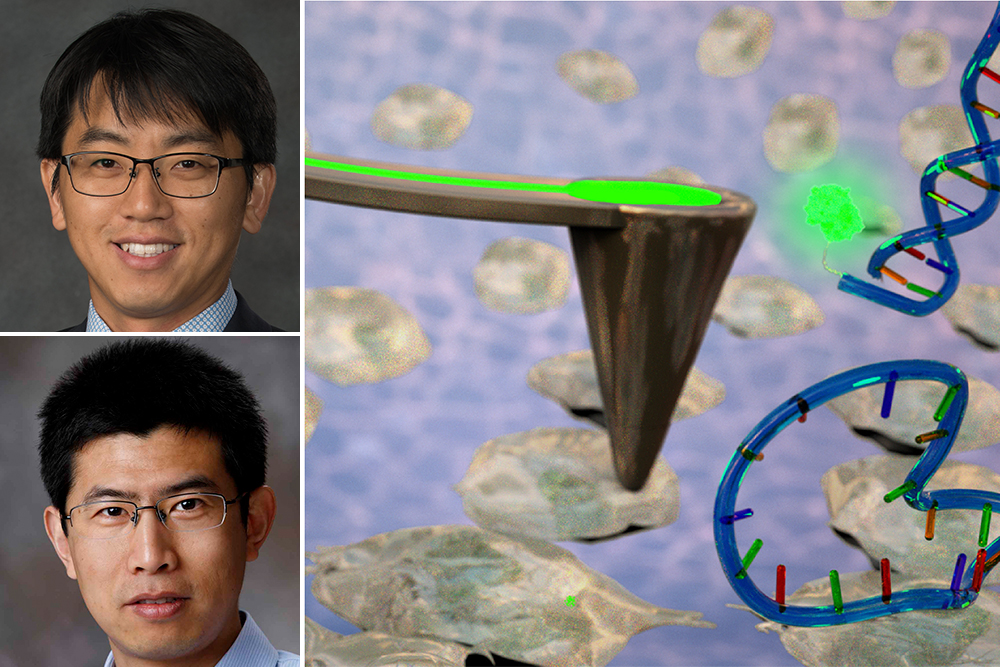Calendar Icon
Jan 22, 2021
Person Bust Icon
By Karl Vogel
![]() RSS
Submit a Story
RSS
Submit a Story

By applying electrical charges to cell surfaces, two College of Engineering researchers are working to find a way to improve drug delivery systems that could help fight cancer, heart disease and other neurodegenerative diseases.
Jae Sung Park and Ruiguo Yang, each an assistant professor of mechanical and materials engineering, received a three-year, $387,356 grant from the National Science Foundation to apply electrical charges to protein cells, such as RNA, and how those charges change the flows around pores in the cell's surface.
"The cell surface is less than the width of a hair and it has small pores, and the idea is to deliver the drug more effectively by applying electric charges to individual cells to open the pores wider," Park said. "If we can deliver the drug through those small pores, it might help treat those diseases more efficiently and effectively."
Placing a charge on one of those cells also changes the way fluids can flow into and around the pores, and Park said this team is working to find ways of controlling and predicting those flows in a collective way, theoretically, numerically and experimentally.
Through scanning ion-conductance microscopy (SICM), a technique that effectively defines surface topography of structures down to nanometer-range, the team will be able to better understand how those charges change the pores and how to control the charges and flows around them.
It's about understanding the physics, noted Park and Yang. "Once we know that we can apply a certain size of electrical fields to create a certain size pore, we can certainly have a better drug delivery system," Park added.
While the grant was received in August 2020, the project has been in development for nearly four years since the first conversation between Park and Yang as office neighbors back in 2017. Park said the team has already generated a good amount of data and is submitting papers for journal publications.
"When I came here in 2017, I was given the office next door to Dr. Yang. Since then, we've been hanging out and talking about life and research, and sometimes that pays off," Park said.
"We're making very good, fast progress already, and some of that is because we've been thinking about this project and working on it for quite a while."
Submit a Story